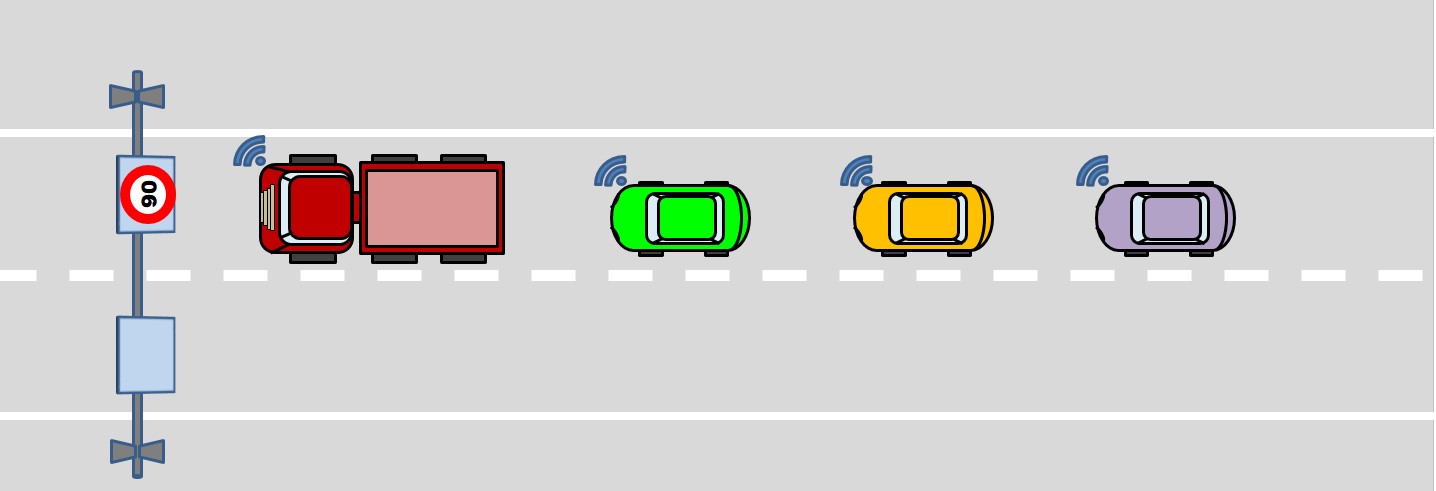Efficient Emergency Braking in Platoons
Platoons consist of vehicles closely following each other at short separations of 5 to 10 meters. The vehicles communicate and coordinate their actions through the wireless exchange of messages containing critical information that are processed by longitudinal and lateral control systems present at each vehicle.
The advantages of platoons are increased vehicle throughput on highways, fuel/energy savings due to reduced aerodynamic forces, driver comfort and, hence, safe driving. At separations of 5 meters and above, the lead vehicle in a platoon has no fuel/energy savings. However, wind tunnel experiments have demonstrated that the lead vehicle also experiences benefits when the separations are below 5 meters. At such very short separations, even though the fuel/energy savings are maximized, braking maneuvers become extremely dangerous considering platoons are operating at highway speeds of more than 100 km/h.
Especially during an emergency, all the vehicles have to be brought to a complete standstill in the shortest distance possible. Therefore, all vehicles have to apply their maximum possible brake forces. However, such maneuvers are characterized by heterogeneous deceleration capabilities of the vehicles. For example, if one vehicle brakes at its maximum deceleration capability, the same deceleration might not be possible for its immediate leading and following vehicles due to their loading conditions. This may result in catastrophic vehicle collisions. Hence, the main focus of this research is to design approaches and brake-by-wire controllers that facilitate safe collision-free braking of platoons.
|
|






